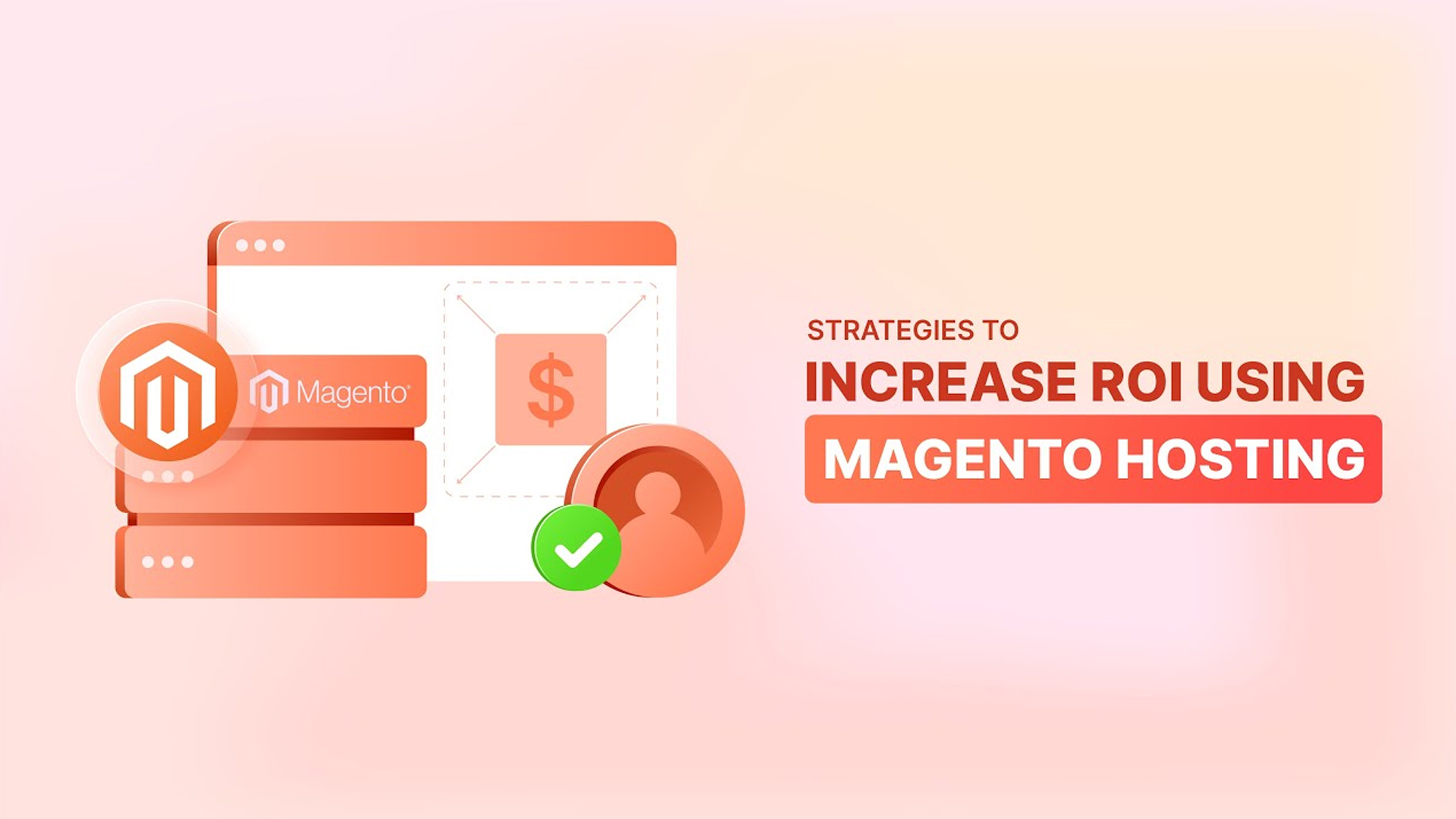The ROI of Your E-commerce Platform: Proving Your Investment’s Value in 2025
You’ve invested significantly in your e-commerce platform. Whether it’s the powerful, flexible architecture of Magento Open Source or the enterprise-grade capabilities of Adobe Commerce, you’ve committed resources – time, money, and talent – to build your online storefront. But as your business grows and digital landscapes evolve, a critical question inevitably arises: How do you move beyond mere functionality and truly prove the value of this investment?
In 2025, with increasing scrutiny on digital expenditures and the intense competition in the Indian e-commerce market, justifying your platform choice is no longer optional. It’s essential for securing future budgets, informing strategic decisions, and demonstrating concrete success to stakeholders, investors, and your own team.
This guide will walk you through the process of identifying, measuring, and presenting the real Return on Investment (ROI) of your e-commerce platform. It’s about shifting the perception of your platform from a cost center to a strategic asset that drives growth and profitability.
Why Proving Your Platform’s Value is Non-Negotiable
Ignoring the need to demonstrate value can have severe repercussions:
- Justifying Investment & Securing Budgets: A robust e-commerce platform requires ongoing investment in maintenance, upgrades, and new features. Without clear ROI, it’s challenging to justify these expenses to finance departments or the C-suite.
- Informing Strategic Decisions: Data on platform performance helps you understand what’s working and what’s not. This insight guides decisions on feature prioritization, resource allocation, and market expansion.
- Demonstrating Success: Proving value allows you to showcase the tangible impact of your digital strategy, celebrating successes and building confidence within your organization.
- Mitigating Risk: By continuously monitoring your platform’s performance, you can identify potential issues early, optimize resource allocation, and ensure long-term stability.
- Competitive Edge: Understanding your platform’s true value helps you adapt faster, optimize better, and ultimately outmaneuver competitors in a dynamic market like India, where digital innovation is key.
Defining “Value”: Beyond Just Direct Sales
The immediate thought when assessing an e-commerce platform’s value is often “sales revenue.” While crucial, this is only one piece of the puzzle. True value encompasses a broader spectrum of benefits:
- Direct Revenue Impact: The most obvious – increased sales volume, higher average order values, and improved conversion rates.
- Cost Reduction: Efficiencies gained through automation, reduced manual labor, optimized inventory, and potentially lower infrastructure costs compared to alternatives.
- Enhanced Customer Experience (CX): Leading to higher customer satisfaction, increased loyalty, better retention rates, and positive brand perception.
- Scalability & Future-Proofing: The platform’s ability to support growth, handle increased traffic, and adapt to future technological trends without requiring costly re-platforming.
- Risk Mitigation: Robust security features, compliance adherence (e.g., PCI DSS), and reliable uptime.
- Innovation & Agility: The platform’s capacity to integrate new technologies, launch new features quickly, and support evolving business models.
- Employee Productivity: Streamlined backend workflows, intuitive admin interfaces, and better data access for internal teams (marketing, sales, operations, support).
Key Metrics to Track (KPIs) for Proving Value
To quantify these diverse aspects of value, you need to track a comprehensive set of Key Performance Indicators (KPIs). Leveraging tools like Google Analytics 4 (GA4), your platform’s built-in reporting (like Magento Business Intelligence or Adobe Commerce Intelligence), and CRM systems is essential.
1. Revenue & Sales Metrics: The Bottom Line
- Gross Merchandise Value (GMV): The total value of all goods sold through your platform over a period. This is your raw sales volume.
- Net Sales Revenue: GMV minus returns, discounts, and cancellations. This reflects your actual revenue.
- Average Order Value (AOV): Total revenue divided by the number of orders. A higher AOV indicates customers are buying more per transaction. Your platform’s features like AI-powered recommendations, cross-sell/up-sell prompts, or bundled products directly impact AOV.
- Conversion Rate (CR): The percentage of website visitors who complete a purchase. This is a crucial indicator of your store’s effectiveness. A well-optimized Magento checkout flow, fast page load times, and personalized product displays (enabled by advanced platform features) can significantly boost this.
- Repeat Purchase Rate: The percentage of customers who return to make a second (or more) purchase. This demonstrates customer loyalty and the effectiveness of your platform’s features that enhance the post-purchase experience (e.g., user accounts, saved payment methods).
2. Customer Experience (CX) & Engagement Metrics: Building Loyalty
- Customer Lifetime Value (CLTV): The total revenue a single customer is expected to generate over their relationship with your business. A platform that enables strong personalization, loyalty programs, and seamless experiences will contribute directly to a higher CLTV.
- Customer Acquisition Cost (CAC): The cost to acquire a new customer. While marketing efforts drive this, a high-converting platform can lower your CAC by maximizing the value of every visitor.
- Retention Rate / Churn Rate: The percentage of customers who continue to buy from you versus those who stop. A user-friendly, stable, and feature-rich platform fosters loyalty.
- Net Promoter Score (NPS) / Customer Satisfaction (CSAT): Survey-based metrics that gauge how likely customers are to recommend your brand or how satisfied they are with their shopping experience. A smooth, intuitive platform contributes positively to these scores.
- Bounce Rate & Dwell Time: Metrics that indicate user engagement. A low bounce rate and high dwell time suggest your content is relevant and your site is engaging, which search engines (like Google) increasingly consider for ranking.
- Mobile Conversion Rate: Given India’s mobile-first internet usage, the performance and usability of your store on mobile devices are critical. Magento’s PWA capabilities directly impact this.
3. Operational Efficiency & Cost Reduction Metrics: Streamlining Your Business
- Order Processing Time: How long it takes to process an order from placement to fulfillment. Automation features in Magento (e.g., integrated shipping, automated notifications) can drastically reduce this.
- Inventory Accuracy: Reduced discrepancies between physical stock and system records. Magento’s Multi-Source Inventory (MSI) capabilities improve this, reducing overselling or stockouts.
- Return Rate: The percentage of products returned. While often product-related, a clear return policy, easy RMA process (Return Merchandise Authorization, a common Magento feature), and accurate product descriptions can mitigate this.
- Support Ticket Volume: A well-designed UX and effective self-service options (FAQs, knowledge base) on your platform can reduce the number of customer support inquiries.
- Infrastructure/Hosting Costs: Compare your current hosting expenses to previous platforms or what you might incur with less scalable solutions. Magento’s cloud deployments often offer optimized cost-efficiency at scale.
- Cost Per Feature Development/Integration: How easily and cost-effectively new features or third-party integrations can be added. Magento’s extensibility often lowers these costs compared to platforms with closed ecosystems.
4. Performance & Technical Metrics: The Silent Enablers
- Page Load Speed (Core Web Vitals): Metrics like Largest Contentful Paint (LCP), First Input Delay (FID), and Cumulative Layout Shift (CLS) directly impact user experience and Google SEO rankings. Magento, especially with headless or PWA implementations, can deliver exceptional speed.
- Uptime: The percentage of time your store is accessible and operational. High uptime demonstrates platform reliability, crucial for sales and customer trust.
- Security Incidents: The number of attempted or successful security breaches. A robust platform like Adobe Commerce offers enterprise-grade security features that minimize these risks.
5. Marketing & SEO Metrics: Boosting Your Visibility
- Organic Traffic Growth: An increase in visitors coming from unpaid search results. Magento’s inherent SEO capabilities and features like schema markup, fast load times, and clean URLs contribute to this.
- Keyword Rankings: Improved positions for your target keywords in search engine results, leading to higher visibility.
- PPC Efficiency: While paid, a strong platform (with optimized landing pages, fast load times, and clear calls to action) improves the conversion rates of your PPC campaigns, lowering your effective Cost Per Acquisition (CPA).
Attributing Value to the Platform: Making the Case
This is where the art meets the science. How do you isolate the platform’s specific contribution to these metrics?
- Baseline Comparison:
- Previous Platform: If you migrated, compare current metrics against the performance of your old e-commerce platform.
- Industry Benchmarks: Compare your KPIs against industry averages (e.g., average conversion rates for your sector in India).
- “Before & After” Analysis: For a new feature implemented on Magento, compare metrics from before and after its deployment.
- A/B Testing (A/B/n Testing):
- Leverage Magento’s capabilities or integrate with tools like Google Optimize (though its discontinuation means looking at alternatives like Optimizely, VWO, or Adobe Target) to test specific features, layouts, or content variations. This provides direct evidence of their impact. For example, test a new checkout flow that your Magento platform enables.
- Correlation, Not Just Causation:
- While direct causation can be hard to prove for every metric, look for strong correlations. Did conversion rates jump significantly after optimizing page speed on your Magento store? Did AOV increase after implementing AI-powered product recommendations?
- Specific Feature Impact:
- Tie metric improvements directly to specific platform features.
- “Our B2B sales increased by 20% due to the new Company Accounts and Quote Management features in Adobe Commerce.”
- “Mobile conversion improved by 15% after implementing the PWA Studio frontend.”
- “Order processing time reduced by 30% thanks to Magento’s advanced order management integrations.”
- Tie metric improvements directly to specific platform features.
- Qualitative Data:
- Don’t underestimate the power of testimonials and feedback.
- Customer Surveys: Ask about their experience, site usability, and satisfaction.
- Internal Team Feedback: Collect insights from marketing, sales, and support teams on how the new platform has streamlined their work or solved pain points.
- Client Testimonials: If you’re an agency, get written or video testimonials from satisfied clients specifically praising the platform’s impact.
- Don’t underestimate the power of testimonials and feedback.
Presenting Your Value Proposition to Stakeholders
Once you’ve gathered your data, effective communication is key.
- Know Your Audience: Tailor your message to resonate with their priorities.
- C-suite/Investors: Focus on overall revenue growth, profitability, market share, and long-term scalability.
- Marketing: Emphasize lead generation, conversion rates, customer lifetime value, and campaign effectiveness.
- IT/Development: Highlight system stability, security, uptime, ease of integration, and reduced technical debt.
- Operations: Focus on efficiency gains, reduced manual work, and inventory accuracy.
- Tell a Story with Data: Don’t just present numbers. Weave them into a compelling narrative:
- Problem: What challenges existed before the platform (or before a specific feature)?
- Solution: How did the Magento platform (or its feature) address this?
- Impact: What were the measurable results?
- Use Powerful Visualizations: Charts, graphs, and dashboards (e.g., from Magento Business Intelligence/Adobe Commerce Intelligence, or custom dashboards in Power BI/Tableau) make complex data understandable and impactful.
- Focus on ROI: Clearly articulate the investment made versus the quantifiable returns generated.
- Look to the Future: Demonstrate how the platform will enable future innovation, market expansion, and sustained competitive advantage.
Conclusion: Your E-commerce Platform as a Strategic Asset
In 2025, an e-commerce platform like Magento is far more than just a place to list your products. It is a fundamental strategic asset that, when properly leveraged and its value meticulously measured, can become the engine of your online growth.
By diligently tracking key metrics, attributing improvements to your platform’s capabilities, and communicating these insights effectively to stakeholders, you transform your e-commerce platform from a perceived cost into a proven investment. This data-driven approach not only justifies your current expenditures but also empowers you to make informed decisions for future enhancements, ensuring your online store remains competitive, profitable, and ready for whatever the future of digital commerce holds.




